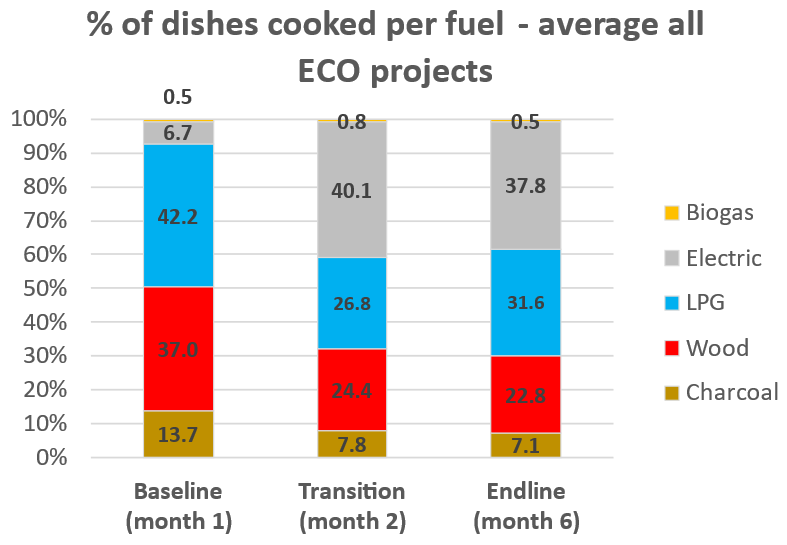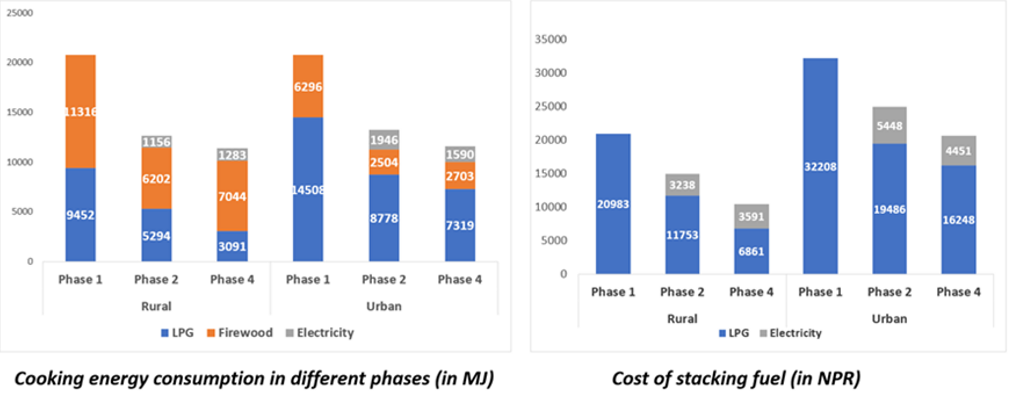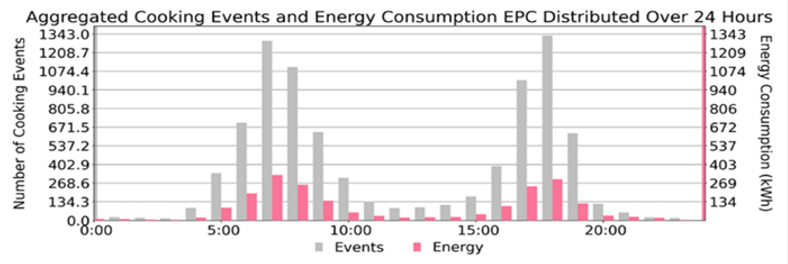
- Date
- 26th October 2022
- Categories
By Dr. Richard Sieff (Research Consultant, MECS).
The completion of eight projects funded under the MECS Electric Cooking Outreach (ECO) challenge fund has significantly advanced the case for electric cooking at scale by demonstrating that not only are efficient electric cooking appliances (EECAs) compatible with local menus, but that people are also willing to use and pay for electric cooking (eCooking) on a sustained basis. The seven community scale 6-month pilot studies and one market assessment assessed the compatibility, uptake and broader market opportunities for EECAs in different socio-economic and cultural contexts in Africa and Asia. The findings are drawn together in the new ECO Final Report and provide an evidence base to inform policymakers, investors and other key actors of the current opportunities to scale up eCooking, de-risk policy making and investment, and accelerate the transition away from the harmful impacts of cooking with solid fuels such as wood and charcoal.
Swift, significant and sustained eCooking uptake
The results from the seven pilot studies were highly encouraging. In each study, an initial baseline of existing cooking practices and cooking fuel consumption was carried out before EECAs were distributed to participating households. Once introduced, eCooking uptake was swift, significant and sustained in all locations. On average, the percentage of dishes cooked with electricity increased from 7% in month 1 (the baseline) to 38% in month 6 (Figure 1). The increase in eCooking led to large, corresponding falls in cooking with fossil fuels and biomass. On average, wood use reduced by 40%, LPG by 25%, while Charcoal use fell by almost half. These reductions highlight how eCooking can lower greenhouse gas emissions, contribute to national climate change targets and offer major health, social, economic, and environmental benefits.

ECO locations
The ECO projects spanned a range of locations, strengthening the case for eCooking by showing EECAs fit the cooking practices and the electricity supply in a wide range of cultural and socio-economic contexts (Figure 2). Five projects were based in Nepal due to the quality of applications and the opportunity to support the strong enabling environment for eCooking which sees Nepal ranked 2nd on the MECS Global Market Assessment for eCooking scale up viability. This potential was reinforced by the ECO Nepal market assessment, which found the current and near future opportunities for eCooking to be highly promising due to increasing domestic hydropower production, rising consumer demand, and a supportive national policy framework.


‘Real life’ data significantly advances the case for eCooking at scale
The strength of the ECO data set was considerably enhanced by projects using the same MECS cooking diaries methodology. This commonality helped generate more comparable data, creating a stronger evidence base for informing policy. The cooking diaries approach differed from those used in previous MECS studies as the ECO pilots were focussed on understanding consumer behaviour rather than menu compatibility. Therefore, participating households were not asked to cook on the EECAs as much as possible (as with previous menu compatibility studies) but were free to cook using whichever fuels/appliances they wished. This more real-life scenario was key to demonstrating that people are willing to use and pay for electric cooking on a sustained basis. The pilot studies were also far larger than previous MECS cooking diaries studies, helping to advance the case for eCooking at scale. ECO pilots had between 45-160 participants whereas earlier studies typically had 10-20 participants.


Positive user experience leads to demand for multiple EECAs
During the pilots, the menus changed little, indicating eCooking fit the local cooking practices. User experience was positive: households particularly liked the ease of use, convenience, taste of food, and time savings when cooking on EECAs. EPCs were particularly praised for their large fuel cost savings (Figure 6) – an important finding aligning with iDE’s ECO study on marketing strategies which found price sensitivity was a key factor behind EECA purchasing decisions. Clear scope exists to expand eCooking further. Almost all households used only one EECA, with most showing a demand for a second unit. Households wanted to cook dishes simultaneously, suggesting those with two EECAs would likely cook most of their food on electricity.

The need for integrated electrification/clean cooking planning
In all pilot studies, eCooking coincided with existing morning and evening peak demand for electricity, suggesting scaled uptake could potentially cause problems. Electricity supply reliability was also an issue in most locations, preventing households using EECAs as much as they wanted to. Yet, the studies also highlight how EECAs, especially highly efficient EPCs that draw far less power than induction stoves, can mitigate the impact on loads for grid and off-grid systems. Ultimately, the supply side challenges reinforce the increasingly central message of MECS that integrated electrification and clean cooking planning (such as coordinating eCooking rollouts with electricity infrastructure strengthening) will be much more cost effective, and make the greatest gains in tackling access to clean cooking.

Next steps and call to action
By showing that people are willing to use and pay for electric cooking on a sustained basis, the ECO report serves as a call for government and non-government institutions to be far more dynamic in advocating for and scaling electric cooking and demonstrates the clear opportunities for organisations (both state and private sector) to expand their operations and place far larger orders of efficient electric cooking appliances (EECAs). These opportunities to scale eCooking can be fast-tracked if key barriers (which cut across the different ECO projects and contexts) are addressed. The following measures are the principal recommendations for unlocking this potential:
- Increase efforts to address grid supply and reliability issues which prevent housholds using EECAs as much as they would like to. Integrated electrification and clean cooking planning and demand side management measures – including promoting highly efficient appliances such as EPCs – will be key to addressing these issues.
- Improve access to local financing and flexible payment mechanisms to enable low-income households to purchase EECAs.
- Establish more decentralised after sales services to cater for last mile EECA repair and maintenance.
- Improve supply chains to enable durable, good quality products to be more consistently available at the local level.
- Leverage and strengthen local organisations to provide key activities along the eCooking supply chain such as sales, after sales services, and awareness raising.
- Develop mechanisms to certify and/or upgrade household wiring and meter connections to handle eCooking loads.
These recommendations reinforce the importance of the ‘jigsaw of pieces’ concept at the heart of the MECS country level theory of change, where all pieces need to be in place to enable scaled uptake of eCooking.
…………………………..
Featured image, top. Women in Timal rural community, Nepal, cooking on EPCs (Image credit: IRADe, 2021).